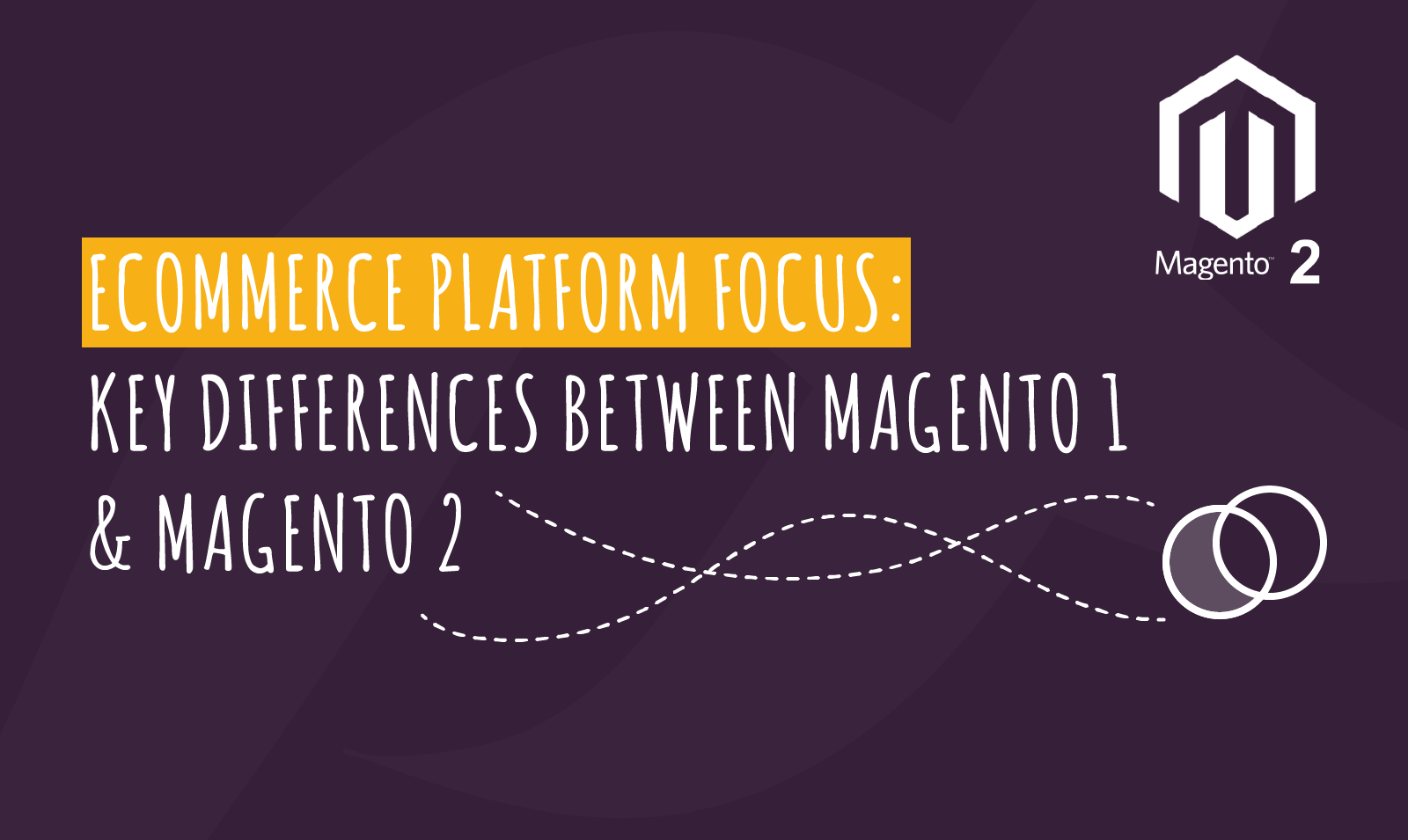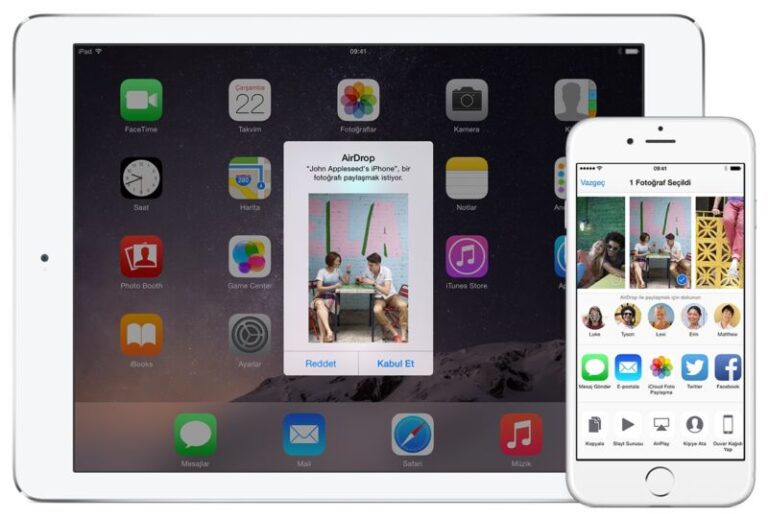
The ecommerce platform Magento 1 ceased being supported in June 2020. Magento is now focusing on its newly designed and upgraded version Magento 2.
This re-imagined platform has been completely redesigned and engineered, offering greater speed, functionality, capacity and flexibility. Tim Butler, CEO of Innovation Visual talks to Sagar Nayyar, Director of Magento Development firm SCommerce Mage to examine the key differences between Magento 1 and 2, the issues around remaining on Magento 1, as well as what is involved in upgrading.
[embedded content]
Video Transcript
Hi, so welcome again to Sagar from Scommerce Mage. Going to have in the video today, we’re just going to do a very quick-fire conversation about the difference between Magento 1 and Magento 2 with somebody that’s been using Magento since the very beginning so I’m expecting you to answer all my questions with no passes or hesitation Sagar! So I hope that’s good.
– Shoot.
– So what I wanted to do today was just have it really useful for the people that watch it, just to understand the differences in each of the different sections between one and two, just so they can think. “Okay yeah, That’s for me, that’s useful, that’s not.” So, if we can kick off, it’s in kind of a particular order. Front end, what’s the differences on the front end?
– I think the front end, they have a very crispy UX and UI designs on there. It’s responsive out of the box and the technologies they have used is a bit different from Magento 1. They are using more HTML5, less, you know, very modern technologies like KnockoutJS. You can also use React if you want, because out of the box they give you APIs available, which is headless so you can have your own front end, if you like. So, it’s completely different from Magento 1 from a front-end point of view
– Okay. Extending that then from front end, mobile experience then you mentioned responsive, what’s the difference between mobile experience, Magento 1, Magento 2.
– Magento 1, it does not come with the responsive at all. So that was a downside, but like you can obviously buy themes and stuff, which can be responsive, but what Magento 2 has done, they have not only the front end, the admin portal as well. It’s more of a more responsive design. So, you could-
– So you can actually do the admin portal-
– Admin portal, like I’m not saying that it’s 100% there, but it’s much much better than what we had in Magento 1.
– Okay, that’s good. Also on the front video, what any difference?
– I think they have introduced now, you can have YouTube videos, you know, integrated with it so you can use your YouTube APIs to show videos on Magento 2 whereas Magento 1 did not have that.
– Didn’t have that. Okay, the reporting then. So how would reporting be different between Magento-
– It’s completely different. Like, you know, they have, if you have used Magento 1, you will see all sort of reports which were there in Magento 1, in Magento 2 and also, they have now BI reporting, which is a separate entity altogether. And you can offload all your data, which you want to analyse separately and there are, you know, they use Tableau and all sorts of reports where you can see, you know, much granular reports, which you couldn’t do in Magento 1. So it’s out of the box, from day one, you can just integrate, I think it’s a paid service, but it’s worth having that sort of report if you are actually really into, you know, looking at your data, looking at the segments, just getting the insight of the information, that you need.
– Okay, so much more powerful than Magento 1?
– Much more powerful than Magento 1, yes, for sure.
– Are there any differences in order processing?
– I think, in terms of the order processing, I don’t think so, like you will find a huge difference, in how you were managing the orders where you just basically have auto management, invoicing, dispatching, partial shipments, you know, all that sort of stuff are very similar. I would not think there is anything which they have changed. The one thing, which I’ve mentioned before as well, the introduction of APIs for everything. So, if you have an ERP system out of the box, you will be able to get your orders, invoices, shipping data, and you can sync order statuses between two systems as well. That’s the addition, which is in Magento 2 which was not there in Magento 1.
– Right, that’s pretty powerful, isn’t it? If you’re using other systems. What about user management, any differences there?
– I think user management, there are a couple of things they have introduced very similar to Magento 1, but you know, you will be able to force sign in using the customers. You can place order on behalf of them by obviously the authorization from them. And then you should be able to see more granular report about the customer orders and stuff. But I think as I said, like, you know, it’s not hugely different.
– But that, being able to place orders on behalf of other people, that actually is a very powerful tool for customer service teams, isn’t it?
– Yes.
– So they’re actually able to go in and do that.
– Yup.
– So actually, particularly for complex purchases where maybe somebody is talking to somebody over chat, live chat or audio or something like that, they can place orders, that’s quite powerful thing I would say. In terms of the checkout experience, what would you say has changed about that?
– I think if you compare Magento 1 and Magento 2, I think there is an increase of, you know, in terms of speed is 35% faster, especially because Magento 1 had like five or six steps, so you need to click like five, six buttons, to reach the order confirmation page, whereas Magento 2, you have only two steps so-
– Okay, wow. So they’ve really compressed that checkout process, which is something that we know from performance marketing makes a massive difference to sales.
– Definitely, yeah.
– Wow, okay.
– You want quickly, like you know, people to just buy, instead of going through multiple steps to choose stuff.
– Okay. What about on the, getting people to buy more, What about customization?
– I think you can do a lot, like Magento 2 and Magento 1, you can do customizations in both platforms, but what Magento 2 has introduced is like, you know, you can just do it more easily, you know, there are a lot of technology changes they have adapted, lessons learned from Magento 1. I can go into detail about them, but I think that will be like, you know, too much granular information.
– But the bits that are big difference for people listening to this would be saying, okay, customization is easier.
– Yes, it is-
– Which means it will be less costly because the development company will spend less time doing those customizations.
– Yes, so Magento 1 had a challenge of like, you know, conflicts with a lot of extensions.
– Right.
– Whereas Magento 2 has narrowed it down, so I’m not saying that it will be no conflicts, but it will be less conflicts the way they have architecture it.
– Yeah, okay. That’s good. So interesting one, Are there changes around offline functionality?
– I think in terms of offline, like you can take orders offline. So, you can do, but I think it’s very similar to what we had in Magento 1 as well, so I don’t think that there is a huge difference from there. Whereas, like you know, if you see a lot of new payment providers are coming, like Klarna is very popular nowadays. So, you get those sort of payment providers doing offline payments and stuff like that out of the box, which wasn’t there before in Magento 1.
– Right, so you can do those offline payments and integrate things like Klarna. Yeah, Klarna is really being embraced by a lot of people now, which is great. Is there anything else in terms of the streamlining of the UX that you would call out as a big difference between one and two?
– Yeah, I think the accessibility and UI UX experience has changed completely, you know, earlier they were like, you know, just, they build an e-commerce platform in Magento 1 and whatever the out of the box theme they provided wasn’t, you know, good enough for, addressing these issues. But whereas what they have provided now, it’s much better than Magento 1.
– Okay, that’s good. I’m now thinking big. I’m thinking about my e-commerce store. It’s been going great. So, a multi-currency support and multi-store support. So, for those people that are going, right we need to expand, you know, why go Magento 2 from Magento 1? What’s the differences in the-
– I think, I would say that Magento 1 did support multi-lingual and multi-website so as there is no difference on that front, but because Magento 2 has introduced, you know, the database scaling so you can do more clustering on it. So out of the box, if you want to have your catalogue database completely separate, from your order management database, you could do that. And including your checkout database so you can get like three databases separated from each other, and you can, even if you have a catalogue management team sitting in UK and somebody is sitting in US and they just want to do more orders there so you can actually offload those databases as well, if you want. So that means all the catalogue management, which is just for customers and plus for admin users, they can do it in that database and the order management is completely like, you know, can be done in a separate and I’m just going more technical here, but then, you know, the database concept is like having a master and slave databases. So I talked about these three databases you can have, the three master and then you can have slaves under them when you need them, which means you could have ended up having as many databases if you want.
– So this is where the power of this clustering really comes in now, so that you’re not going to get throttled when it comes to database speed, because you’ve got this power to scale these databases.
– Exactly, because if you think about like, you know, you have 10, 12 multi-website and then you have loads of customers, loads of orders coming in and it’s sitting in one database, it’s going to explode, right?
– Yeah yeah.
– You don’t need a rocket scientist to understand that part.
– So do you have to segment databases by store if you want to or can you leave them together or what’s the-
– I think they will be all together.
– But do catalogue management separate catalogue from orders for the process?
– Yes. Because if you think about it, right, admin person sitting in there, updating catalogue, clearing the caches and stuff like that, and that will affect, you know, all of your checkout, all of your auto management, all that sort of stuff is going to get effected. And that was a challenge in Magento 1, because most of the people were really scared to change anything in the catalogue during the day, because it’s going to clear caches, it’s going to affect the performance, you know, all that sort of stuff. So Magento 2 has more flexibility around that where you have less impact on your front end.
– Right, okay. That’s good. Have you seen any difference in the support for Magento? Well, in fact, I almost know the answer to this question. The question of support for Magento 1 versus Magento 2. It’s quite an easy one, isn’t it?
– I think if you think about it, right? So, they sell at the moment, they have commerce platform which is like on the Commerce Cloud. And then they have Enterprise, which you can go Enterprise, but you can self-host it, and then obviously like you can have, you know, open-source. So, if you go all Commerce Cloud, it’s fully supported by Magento. You don’t need to worry about infrastructure. You don’t need to worry about issues. They will do everything for you. And it’s a very quick response. You create a ticket with them, and they will do that. And then what they have done with the Commerce Cloud is like, the whole pipeline from your development server to the staging server, to the production server, it’s all automated. So you just have a click of a button, it just deploys everywhere.
– Right, okay, so that is actually, that’s going to almost like a SAAS version, but of a fully customized product, which is super, super cool really, isn’t it?
– Yeah.
– Super cool. Okay, that’s great. We’re getting there now. So, search. User search. It’s really important. Difference between one and two.
– So, user search, you know, they have introduced elastic search, which is, you know, very niche technology nowadays like everybody’s just, you know, talking about it. That’s the powerful search you can ever get. So that’s what been introduced in Magento 2 out of the box. So you can just change the configuration and get it all set up, you know?
– Okay.
– It can’t be as easy as that so.
– But it’s more powerful?
– It’s much powerful than normal, you know, MySQL database search.
– Yeah, okay. One of your favourite subjects, speed.
– Right.
– Difference between speed on one and two.
– Yeah. I think as I mentioned before, as well, the technical side of things, the tech stack has completely changed in Magento 2. They understand that the speed is really important. So, they have introduced like merging of CSS, merging of JavaScript. Minify CSS’s, minified JavaScripts. You can, out of the box, have Varnish as well, which is a front-end cache mechanism. You can have a Redis out of the box, you can configure for back end caching. Then you have RabbitMQ for the queuing management system. So, you know, just for an example, if you’re placing an order, there’s a lot of things happen, right? So, you just add some stuff to the basket, your checkout, you put your information in there, you do a transaction with a payment provider and then you send an email. So, a lot of things you can offload and put it in the queue, like Amazon does. If you go to Amazon, and you click “buy now” it will just immediately respond back, “Your order has been placed.” They don’t take order, you know, they don’t take payment at that time. They just put it in the queue, your order processing happens later. They process the payment, in case if your card has problems, you will get an email back saying that, “Sorry, your card has as a problem, use the alternative methods.” And stuff like that.
– So, better user experience, better use of the resources at the server side in terms of, you don’t to be dealing with massive peaks and troughs kind of thing so you can level that out and good user experience in that then it doesn’t have to be caught by somebody manually in terms of if something failed so, okay.
– But there is a lot of things you could do with Magento 2 platform, which wasn’t there in the Magento 1.
– Okay, okay. So, here’s a big question. I’m not going to ask you how much an upgrade would typically cost because I know that that is like how long is a piece of string. But people would be interested in understanding typically what a timeline is. And if we contextualize this by saying single site, no multi-language, none of that complexity, probably running a single currency. Typical, you know, few hundred skews or whatever, what’s the kind of timeline that people should be thinking about for doing a migration from one to two.
– I think if you are talking about one to two and you know, it depends on a lot of other factors as well. How many extensions you have in Magento 1, whether those extensions are available in Magento 2 or not, you know, anything you have done bespoke in Magento 1, which wasn’t been done by third parties, you just did it in house. So, we need to rewrite all of that stuff into Magento 2. But if it’s a simple site where very few plugins are out there, I would think that probably around three months. Two to three months.
– Okay, that’s still quite a long timeline given that there is no longer support for Magento 1. People really need thinking about it.
– Yeah, I think because if you think about it, right. As I mentioned that Magento 2 is a re-platform, you know, when it comes to upgrade, people just think, okay, I’m going to the next version.
– Yeah. It’s like going from, you know, one version of Word or your OS, when your phone says, we’re going to upgrade you overnight, it’s not that easy.
– It’s not that easy. It’s completely re-platformed. So that means, I would say that, you know, you are rebuilding the site and the three months, you know, rebuilding on a new platform, it’s going to take a bit of time, depending on, as I said, it all depends on what you have. If you have out of the box Magento, and you just want to do it Magento 2 that is much, much quicker but I would doubt it. Any client out there who have just Magento 1 and no plugins, no bespoke elements, no-
– Because they wouldn’t have bought Magento if they didn’t need anything special.
– Exactly. So, yeah.
– Yeah, okay. Before we finish, is there anything that people need to be aware of when looking at the migration? You know, what should be front of mind for them?
– I think the most important thing which I say to all our clients as well is check the data. When you’re migrating from one platform to another, make sure all your data been transferred. Even though like, you know, Magento has done a really good job of giving a migration tool out of the box, which does a wonderful job. But then companies like us, when we migrate, we just migrate the data, right? We don’t understand, the data itself, whether, you know, how many categories they were having, how many products they were having, what sort of colour options they were having. So, I would say that when you’re done with the data migration, just make sure that you check the data thoroughly.
– So probably plan that data migration thoroughly as well, and then check it at the other end. Not just assume that it’s okay.
– Yeah, because we had instances where people just like suddenly came back, “Oh, I have few hundred products missing” and then we look back and then we managed to get it in there. But again, like, you know, if you do it upfront, then you don’t have that sort of hassle after going live and you’re finding there are, things are missing.
– Yeah. Yup. Factor of, they’re not planning properly. Okay. No, that’s great. Really good, so that’s our quick-fire differences between Magento 1 and Magento 2. I’m sure there’s even more detail we can drill into. People will be looking at this on the Innovation Visual Knowledge Hub but, if they want to get hold of you, how could they get hold of you?
– They can email us at core@2572495e08.nxcli.net or they can also go on our website, 2572495e08.nxcli.net
If you would like any more information or we can help you investigate what might be involved in upgrading to Magento 2 please don’t hesitate to get in touch with our knowledgeable team.






